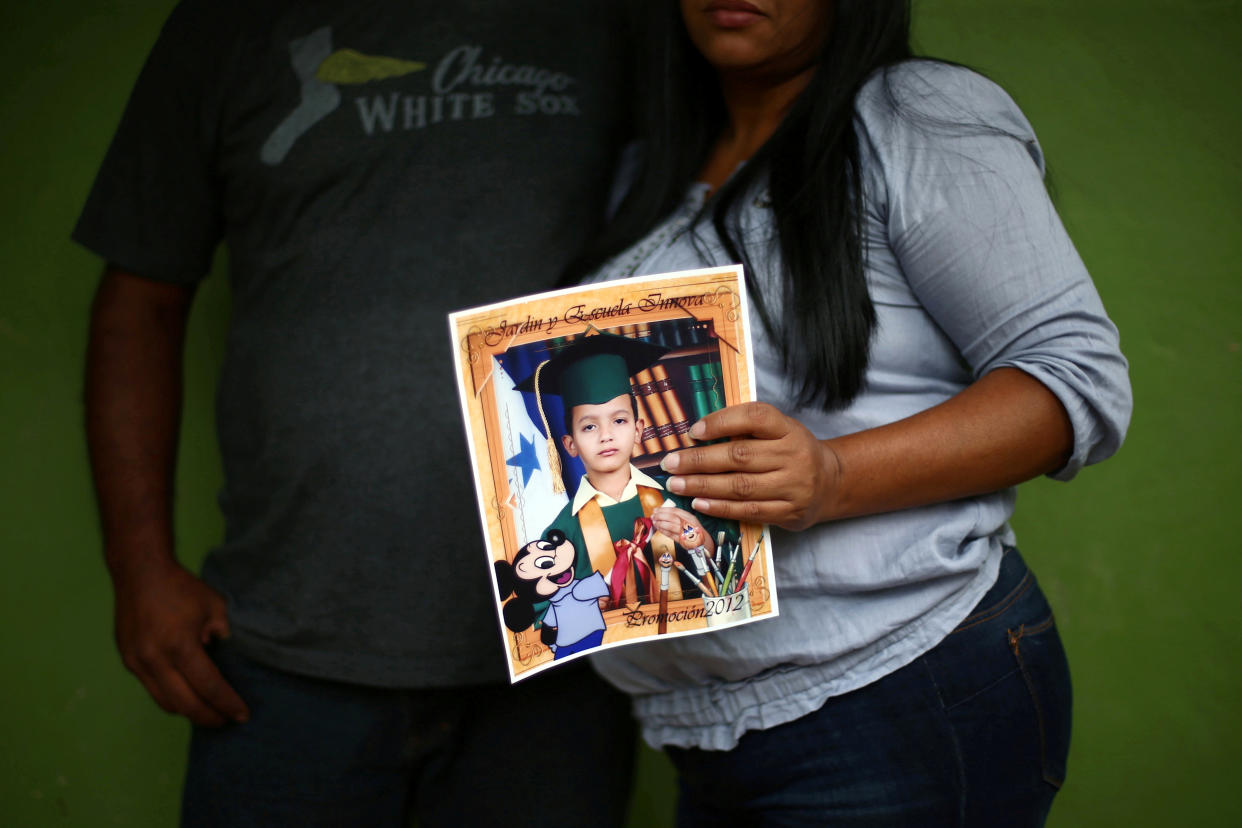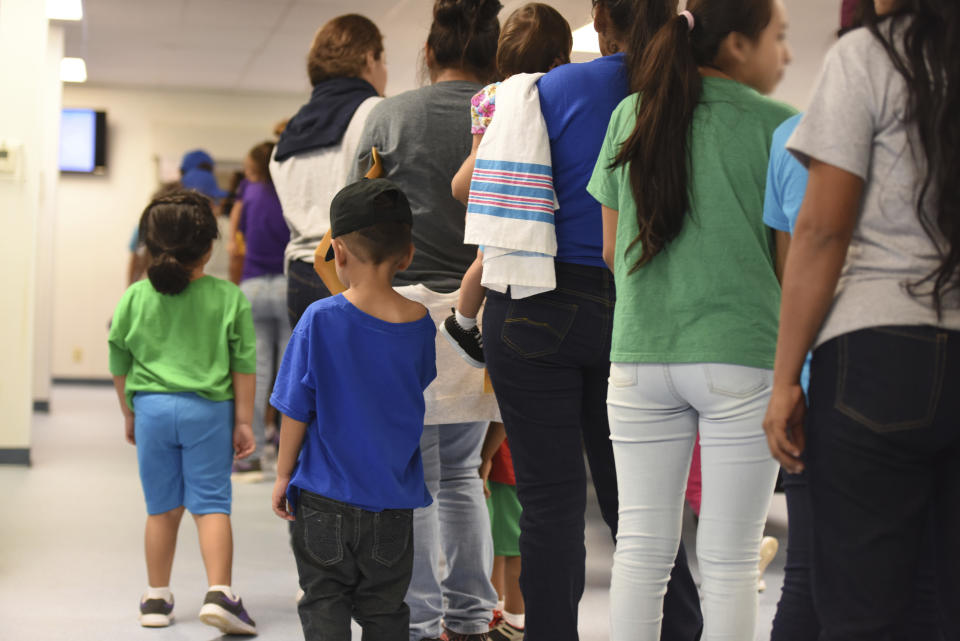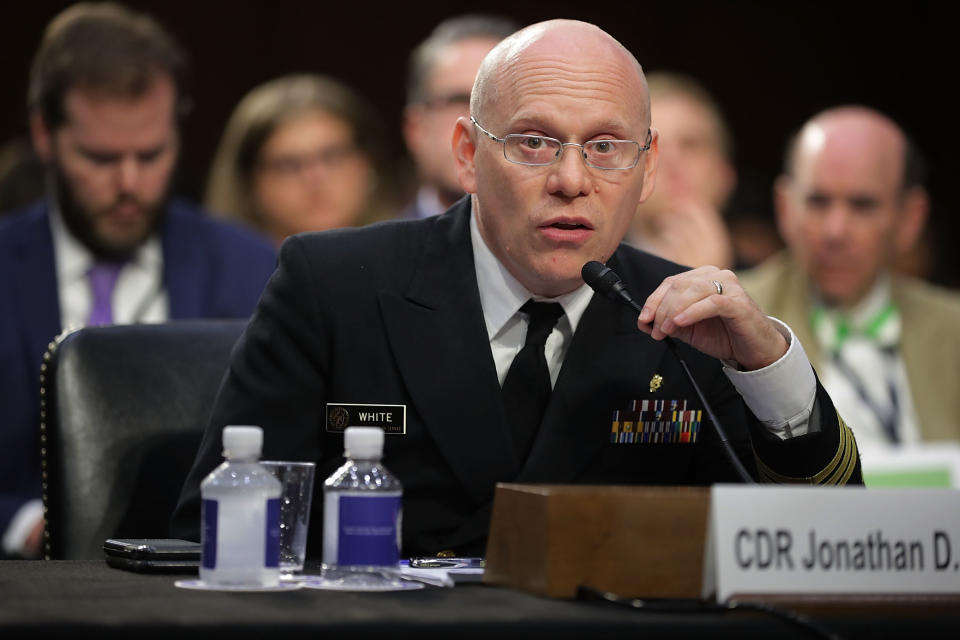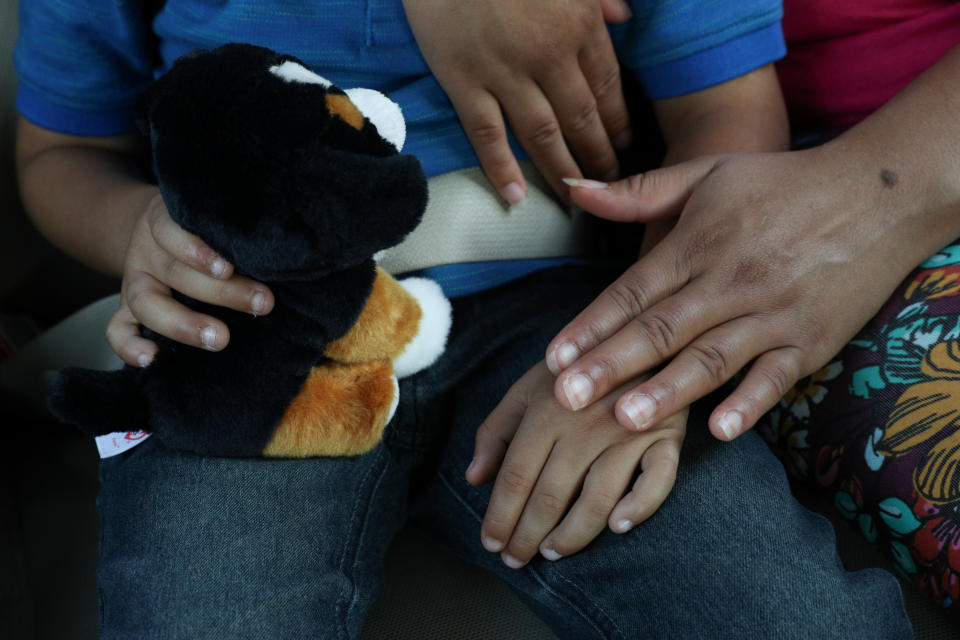Some 'zero tolerance' kids might never get their parents back, U.S. admits

Last spring, following threats of violence from local gang members, a teenage girl and her mother fled their home in El Salvador to seek refuge in the United States, only to be forcibly separated from one another shortly after crossing the border.
Patricia (whose name has been changed to protect her privacy) was among the thousands of immigrant children who were separated from their parents during the height of the Trump administration’s zero tolerance policy — the period between approximately April 6 and June 20, 2018, when immigrant families were systematically separated at the border, following an order by Attorney General Jeff Sessions that all adults caught crossing or attempting to illegally cross the southwest border be referred directly for criminal prosecution.
Since minor children cannot be held in jail, this required separating them from their parents. Patricia was transferred from Customs and Border Protection to the Office of Refugee Resettlement, the agency within the U.S. Department of Health and Human services responsible for the care of unaccompanied immigrant children. Following existing procedure, ORR caseworkers set out to find a suitable adult sponsor in the U.S., preferably a parent or close relative, who could take Patricia for the duration of what was now her own, individual immigration case.
Within a few weeks, ORR had secured a sponsor for Patricia: an aunt who lived in California.
But on June 26, 2018, while Patricia was still in ORR custody, a federal judge in California issued an injunction ordering the prompt reunification of all adults and children who’d been separated as a result of zero tolerance. That date was a crucial turning point in bringing some semblance of order to what immediately proved to be a chaotic and disorganized reunification effort. The judge allowed HHS to narrow its search for separated children to those in detention as of June 26, 2018.
That should have covered Patricia, but in the confusion of those weeks, Patricia was released into the custody of her aunt in early July. Though she had yet to even make contact with her mother at that point, Patricia was apparently not included in ORR’s initial tally submitted to the court that month of 2,654 children in its care that had been identified as separated and eligible for reunification under the court’s order. (That number has since been revised to 2,816.)
“I think she would have been subject to the court-ordered reunification (and probably should have been) but the first week of July was right before they started reunifying kids en masse and there was a lot of chaos,” said Christie Turner, deputy director of legal services for the Family Separation Project at Kids in Need of Defense, or KIND. Through a broad network of volunteer attorneys, KIND has been providing pro bono legal services to unaccompanied immigrant children across the country since 2009 and, according to their website, now also represents 300 kids separated from their parents under zero tolerance.
Patricia’s case was referred to KIND once she was released to her aunt. Turner suspects that, because Patricia’s release from ORR was set in motion at the same time HHS and DHS officials were scrambling to track down all of the adults and children that had previously been separated, “maybe she fell through the cracks.”
Instead, Patricia would become part of a different, potentially even larger group of kids who were separated under the same circumstances but had been released from ORR to another adult sponsor before — or in Patricia’s case, right after — the Trump administration was ordered to put back together the families it had torn apart.
According to a report released last month by HHS’s Office of Inspector General, officials and staff at ORR observed “a steep increase” in the number of children referred to their care who’d been separated from a parent or guardian starting in the summer of 2017, well before “zero tolerance” was officially announced the following April. ORR officials estimated that, during this influx, the agency received and released thousands of separated children before Judge Dana Sabraw issued the reunification order on June 26, 2018. The OIG’s report concluded that “the total number and current status of all children separated from their parents or guardians by DHS and referred to ORR’s care is unknown.”
According to informal tracking used by ORR staff, the proportion of separated kids being sent to ORR custody rose from approx. 0.3% in late 2016 to 3.6 % by August 2017.
— Caitlin Dickson (@CEDickson) January 17, 2019
Turner and other attorneys who work directly with this specific population say that, based on the cases they’ve encountered, many of those children who were released to sponsors before the court order still remain separated from their parents to this day. And yet, HHS officials have made clear they have no intention of trying to count or identify, let alone reunify the members of this group with their parents — claiming that such an effort would not only be logistically impossible but could also be “traumatic to the children.”
“Even if ORR had the authority and resources to intervene in the familial relationship between the sponsor and the child, doing so would be disruptive and harmful to the child (especially if the intervention was contrary to the sponsor’s or the child’s wishes),” read part of a declaration submitted in court last week by Jallyn Sualog, deputy director for children’s programs at ORR.
Her declaration was part of the government’s response to the findings of the OIG report, which had been requested by the American Civil Liberties Union as part of the ongoing class-action lawsuit that led to the initial reunification order. In light of the report, the ACLU is now seeking to expand the class to include separated families whose children were released from ORR custody before June 26.
Sualog’s “child welfare concerns” were echoed in a declaration submitted by Jonathan White, a career public health official with HHS. The former deputy director of ORR’s Unaccompanied Alien Children Program, White is currently assigned to the Office of the Assistant Secretary of Preparedness and Response, which took the lead on ORR’s reunification efforts over the summer.
Like Sualog, White inexplicably referred to “forcibly” transferring separated children from the custody of their sponsors, suggesting that such reunifications would require “entering households to remove previously separated minors, bring them back into ORR custody, and reunify them with separated parents.”
“It would destabilize the permanency of their existing home environment, and could be traumatic to the children,” White stated. He maintained that “the option more consistent with the best interest of the child would be to allow the child to remain with their sponsor.” He said the agency should “focus instead on the ongoing work of reunifying parents with separated children presently in ORR care,” although that work, obviously, doesn’t address the needs of the children already placed with sponsors, or their parents.

White’s claims about the possible trauma of reunifying a child with the parent from whom they were forcibly separated were met with shock and confusion by experts in psychology and child development.
“I’m at a loss for words,” said Nim Tottenham, a psychology professor at Columbia University, whose research focuses on the long-term effects of early-life stress on the brain development of children and adolescents.
“The separation from your primary attachment figure is one of the greatest traumas that a child can experience,” Tottenham said, explaining that the stress such separations cause places them at higher risk not just for cognitive, academic and mental health difficulties, but physical disease.
In response to White’s point about the risks of disrupting the children’s current home environment, Tottenham said that while a child may initially be upset about leaving a sponsor with whom they’ve developed a positive relationship, “it’s unlikely that they would’ve established an attachment to the new home that they’re living in that trumps the initial attachment that they formed with [their parent], regardless of how warm and caring their sponsors may be.”
“If the choice is reunification versus continued separation, I would say the trauma would be more enduring with continued separation,” Tottenham said. She added that the effect of the separation on the parents, often overlooked in the debate, could be “devastating and last a lifetime.”
Cristina Muñiz de la Peña, is the co-founder and mental health director at Terra Firma, a New York City-based legal and medical services program for unaccompanied immigrant children and, more recently, families separated under zero tolerance.
Like Tottenham, Muñiz said she was “really confused” by White’s declaration and “in disbelief” over his policy recommendations.
“To the degree possible, a child should be with a parent,” she said, noting that statewide child protection agencies have well-established protocols for reuniting parents with children who have been placed in foster care or in the custody of a relative.
“I can see instances where a sponsor and child are so attached that there’s resistance, but that’s why there’s a process,” she said, urging ORR to “take the guidelines they already have and adapt them to ease the [reunification] process.”
Muñiz, who testified along with White on Thursday at a hearing of the House Energy and Commerce Committee’s Subcommittee on Oversight and Investigations, told Yahoo News that she understands why officials at HHS and ORR may argue that they are not equipped to fix all the problems caused by a policy that wasn’t theirs to begin with.
“But that doesn’t mean psychologically [reunification] would not be recommended,” she said. “It means the government has to put resources into … developing a system to facilitate reunification in the most humane manner possible.”

Mark Greenberg, a senior fellow at the Migration Policy Institute who previously served as acting assistant secretary for HHS’s Administration for Children and Families, which includes ORR, said that White is correct in that “it’s the longstanding HHS view that after a child has been released to a sponsor, ORR doesn’t have the authority to go into the sponsor’s home and remove the child.” However, he continued, “that’s not the issue here.”
“When the government has separated a parent and child and placed the child with someone else, it’s surely right that the government should tell the parent where their child is,” he said.
In response to a request for comment, a spokesperson for HHS provided Yahoo News with White’s prepared remarks ahead of Thursday’s hearing, which focused mostly on the current state of the Unaccompanied Alien Children Program and the process developed last summer for reuniting separated children and parents under the June 26 court order.
It’s unclear what kind of relationship, if any, Patricia had with her aunt before she was sent to live with her in July, but Turner said Patricia was still in distress over the separation from her mother, who, she eventually learned, was being held at a detention center in Texas.
“KIND’s team worked with Patricia to help her enroll in school and access basic social services, but it was difficult to begin work on Patricia’s immigration case while she remained in emotional anguish, desperate to reunite with her mother,” said Turner, noting that members of her team kept in constant contact with an attorney in Texas “who worked tirelessly to get Patricia’s mother released.”
While she said that “no particular reason was ever provided for the delayed release,” government officials “indicated at various points that they felt the obligation to reunify the child with her parent had already been met by having reunified [Patricia] with extended family.”
“It doesn’t seem to matter … that the child could have been reunified with someone they barely know or have never met, while the parent, meanwhile, languishes in an ICE facility hundreds of miles away,” said Turner.

Finally, just after the New Year, Patricia’s mother was released from detention and flew directly to California for what Turner described as “an emotional reunion with Patricia.”
But an unknown number of children and parents still await their own reunion. Some of the parents have already been deported to their home countries while their children remain with relatives in the U.S. Turner said it’s hard to keep track of parents’ whereabouts once they’ve been deported. Some who fled out of fear of gang violence go into hiding when they return home.
And for those families, and others who were escaping threats to their lives, continued separation may be the best option, said Taylor Levy, legal coordinator for Annunciation House, a migrant shelter in El Paso, Texas. Those parents “made the incredibly difficult choice to be deported and have their child stay here with sponsor. They wanted to save their child’s lives.”
Annunciation House was one of a handful of nongovernmental organizations that offered shelter and support to hundreds of previously separated families after they were reunited under the court-imposed deadlines this summer. Levy said the revelation that possibly thousands more families had been separated than were initially counted was “not a surprise to a lot of people on the ground.” Currently, she said “I get about one to two phone calls per week about new separations in the EL Paso area.”
Levy said she knows of “multiple parents suffering ridiculously long periods of separation because their children were released from ORR custody prior to June 26, 2018,” including several who she said “remain detained 8 months later or longer, some over a year, continuing to fight their cases.”
“It’s completely untenable to say that it would be too traumatic for parent and child to be reunified,” Lee Gelernt, deputy director of the ACLU’s Immigrants’ Rights Project and the lead attorney in the family separation lawsuit, told Yahoo News.
On Feb. 21, Gelernt and his colleagues will return to Judge Sabraw’s courtroom in Southern California. Though the goal will be to reunify as many of these additional parents and children as possible, Gelernt acknowledged that there may be cases in which the parent decides that, because they’ve been deported or for some other reason, their child would be better off with the sponsor and they remain in place.
Either way, he argued, the proper decisions cannot be made unless everyone is accounted for.
“For the government to say it’s not worth the effort to track the families down … rings completely hollow to us,” he said.
Read more from Yahoo News:



